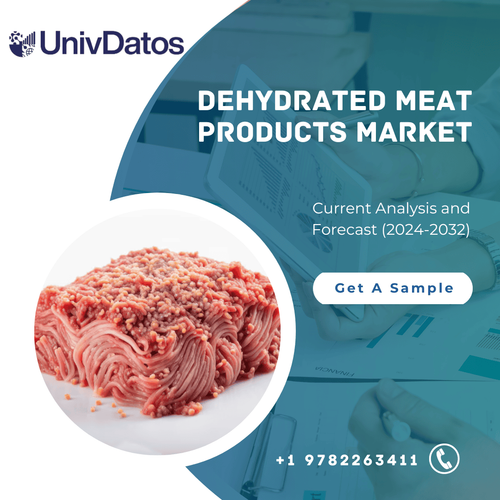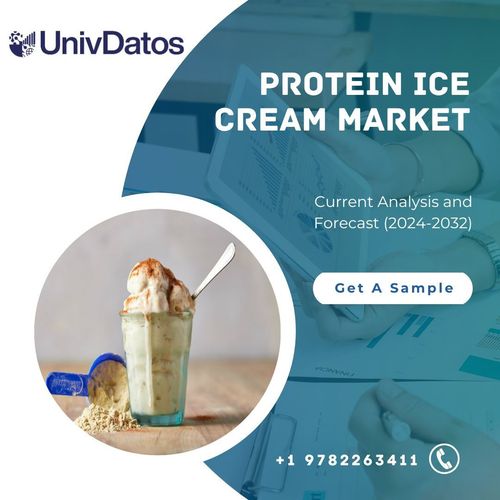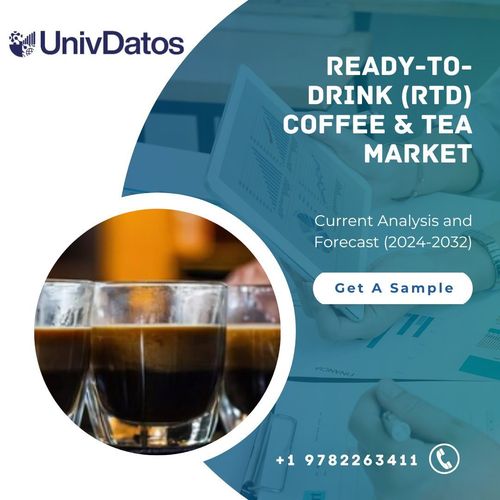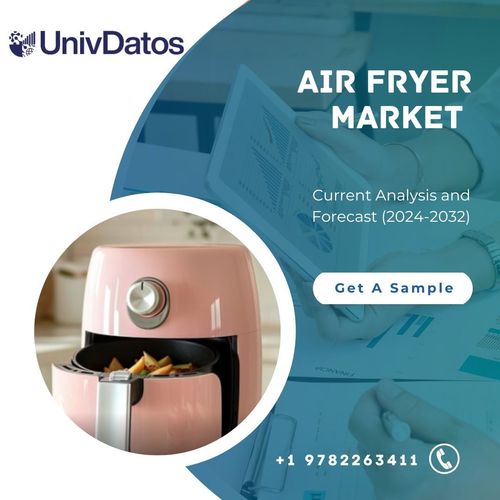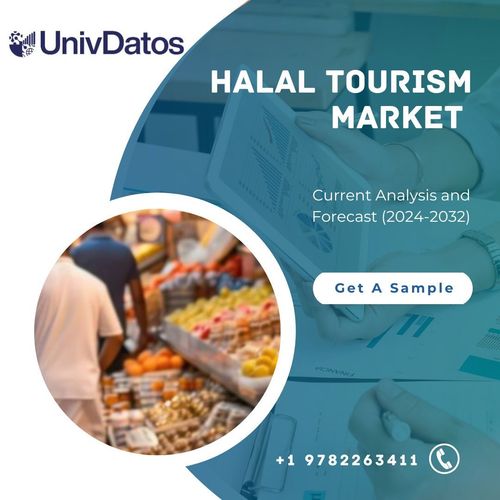MENA Organic Baby Food Market: Current Analysis and Forecast (2023-2030)
Emphasis on Product Type (Baby Cereals, Baby Milk and Infant Formula, Prepared Baby Food, and Others); Distribution Channel (Offline and Online); Country
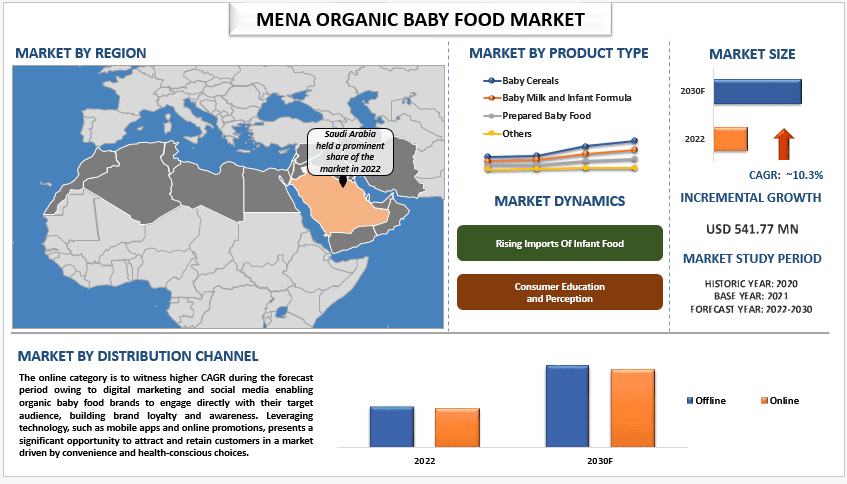
The MENA organic baby food market was valued at USD 541.77 million in the year 2022 and is expected to grow at a strong CAGR of around 10.3% during the forecast period 2023-2030. This is mainly due to several factors such as there is a growing awareness among parents about the importance of providing their children with healthy and organic food. According to the Annual Economic Report of the UAE in 2019, the percentage of women working in the private sector was approximately 44.3%, up from 41.6% in 2017. In response to this, many working mothers in the UAE opt for ready-to-eat baby food due to the limited time they have for meal preparation and the decision to abstain from exclusive breastfeeding, which has contributed to the growth of the organic baby food market in the country. Also, the increasing availability of organic baby food in local supermarkets and online retailers is making it easier for parents to access this type of food for their babies.
Some of the major players operating in the market include Arla Foods amba; Nestlé; Abbott; The Baby Food Company; Saipro Biotech Private Limited.; Hero Group; Bumbles; Danone; Almarai; Ordesa Several M&As along with partnerships have been undertaken by these players to facilitate customers with hi-tech and innovative products/technologies.
Insights Presented in the Report
“Amongst product type, the baby milk and infant formula category is expected to dominate the market during the forecast period.”
Based on Product type, the market is segmented into baby cereals, baby milk and infant formula, baby snacks, prepared baby food, and others. Among them, the baby milk and infant formula category is expected to dominate the market during the forecast period. This is mainly due to the changing consumer preferences; manufacturers are focusing on the introduction of new organic products with flavors. Also, guardians of babies essentially favor fluid food as they are not difficult to eat and process; subsequently, players likewise have 60-70% of items in the wet food classification in their portfolio. For instance, as per Tetrapak, 27% of all baby milk and food were launched in the Middle East in 2020.
“Amongst distribution channel, the offline category captured the majority share of the MENA Organic Baby Food Market in 2022.”
Based on the distribution channel, the market is segmented into offline and online. Among them, the offline category is expected to dominate the organic baby food market in the region during the forecast period. This is mainly due to the buyers’ preferring hypermarkets and stores for buying consumer goods, basic food items as well as childcare items, where they can check item quality. Offline distribution channels such as hypermarkets/supermarkets and general store channels are supposed to stay predominant in the forecast period because of further developed distribution channel networks across the region.
“UAE Region is Expected to Grow at the Fastest CAGR During the Forecast Period”
The organic baby food market in the United Arab Emirates (UAE) has witnessed remarkable growth in recent years. This surge can be attributed to several factors, including an increasing awareness among parents about the importance of organic nutrition for their infants. Rising disposable incomes and a preference for premium-quality products have also fueled this market. The UAE’s commitment to food safety regulations and its reputation for high-quality products make it an attractive destination for organic baby food manufacturers. Furthermore, the growing expatriate population in the UAE, which often values organic options, presents a significant growth opportunity for businesses in this sector.
Q1: What is the current market size and growth potential of the MENA Organic Baby Food market?
Ans: The MENA Organic Baby Food market was valued at USD 541.77 million in 2022 and is expected to grow a CAGR of 10.3% during the forecast period (2023-2030).
Q2: What are the driving factors for the growth of the MENA Organic Baby Food Market?
Ans: Rising Imports Of Infant Food, Sustainable Packaging, and Cultural Preferences.
Q3: Which segment has the largest share of the MENA Organic Baby Food market by Product Type?
Ans: Baby Milk and Infant Formula holds the largest share of the MENA Organic Baby Food market by Product Type.
Q4: What are the latest trends in the MENA Organic Baby Food market?
Ans: Increasing Consumer Demand for Convenience and Variety along with the rising Online Retail and Direct-to-Consumer Channels are few Trends in the MENA Organic Baby Food Market.
Q5: Which region will dominate the MENA Organic Baby Food market?
Ans: Saudi Arabia is expected to dominate the market during the forecast period.
Q6: Who are the key players operating in the MENA Organic Baby Food market?
Ans: Arla Foods amba; Nestlé; Abbott; The Baby Food Company; Saipro Biotech Private Limited.; Hero Group; Bumbles; Danone; Almarai; Ordesa
MENA Organic Baby Food Market Report Coverage
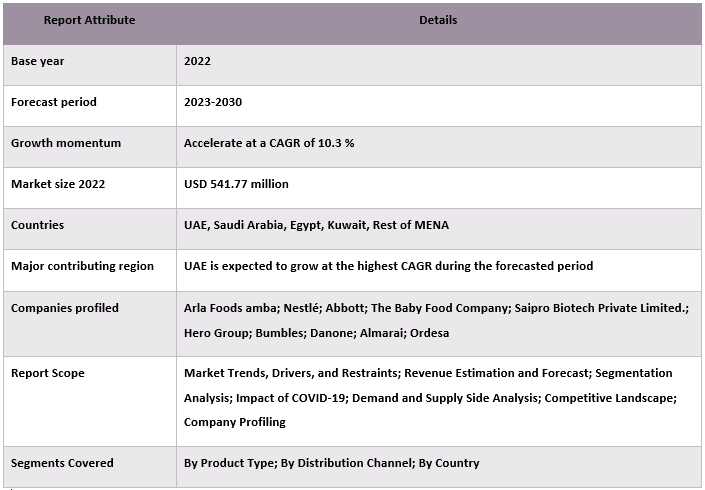
Reasons to buy this report:
- The study includes market sizing and forecasting analysis validated by authenticated key industry experts.
- The report presents a quick review of overall industry performance at one glance.
- The report covers an in-depth analysis of prominent industry peers with a primary focus on key business financials, product portfolios, expansion strategies, and recent developments.
- Detailed examination of drivers, restraints, key trends, and opportunities prevailing in the industry.
- The study comprehensively covers the market across different segments.
- Deep dive regional level analysis of the industry.
Customization Options:
The MENA organic baby food market can further be customized as per the requirement or any other market segment. Besides this, UMI understands that you may have your own business needs, hence feel free to contact us to get a report that completely suits your requirements.
Table of Contents
Research Methodology for the MENA Organic Baby Food Market Analysis (2023-2030)
Analyzing the historical market, estimating the current market, and forecasting the future market of the MENA organic baby food market were the three major steps undertaken to create and analyze the adoption of organic baby food in major countries in MENA. Exhaustive secondary research was conducted to collect the historical market numbers and estimate the current market size. Secondly, to validate these insights, numerous findings and assumptions were taken into consideration. Moreover, exhaustive primary interviews were also conducted, with industry experts across the value chain of the MENA Organic Baby Food Market. Post assumption and validation of market numbers through primary interviews, we employed a top-down/bottom-up approach to forecasting the complete market size. Thereafter, market breakdown and data triangulation methods were adopted to estimate and analyze the market size of segments and sub-segments of the industry pertains to. Detailed methodology is explained below:
Analysis of Historical Market Size
Step 1: In-Depth Study of Secondary Sources:
Detail secondary study was conducted to obtain the historical market size of the MENA Organic Baby Food Market through company internal sources such as annual reports & and financial statements, performance presentations, press releases, etc., and external sources including journals, news & and articles, government publications, competitor publications, sector reports, third-party database, and other credible publications.
Step 2: Market Segmentation:
After obtaining the historical market size of the MENA organic baby food market, we conducted a detailed secondary analysis to gather historical market insights and share for different segments & and sub-segments for major regions. Major segments are included in the report as product type and distribution channel. Further country-level analyses were conducted to evaluate the overall adoption of testing models in that region.
Step 3: Factor Analysis:
After acquiring the historical market size of different segments and sub-segments, we conducted a detailed factor analysis to estimate the current market size of the MENA organic baby food market. Further, we conducted factor analysis using dependent and independent variables such as product type and distribution channel of the MENA organic baby food market. A thorough analysis was conducted for demand and supply-side scenarios considering top partnerships, mergers and acquisitions, business expansion, and product launches in the MENA Organic Baby Food Market sector across the globe.
Current Market Size Estimate & Forecast
Current Market Sizing: Based on actionable insights from the above 3 steps, we arrived at the current market size, key players in the MENA Organic Baby Food Market, and market shares of the segments. All the required percentage shares split, and market breakdowns were determined using the above-mentioned secondary approach and were verified through primary interviews.
Estimation & Forecasting: For market estimation and forecast, weights were assigned to different factors including drivers & trends, restraints, and opportunities available for the stakeholders. After analyzing these factors, relevant forecasting techniques i.e., the top-down/bottom-up approach were applied to arrive at the market forecast for 2030 for different segments and sub-segments across the major markets globally. The research methodology adopted to estimate the market size encompasses:
- The industry’s market size, in terms of revenue (USD) and the adoption rate of the MENA Organic Baby Food Market across the major markets domestically
- All percentage shares, splits, and breakdowns of market segments and sub-segments
- Key players in the MENA Organic Baby Food Market in terms of products offered. Also, the growth strategies adopted by these players to compete in the fast-growing market.
Market Size and Share Validation
Primary Research: In-depth interviews were conducted with the Key Opinion Leaders (KOLs) including Top Level Executives (CXO/VPs, Sales Head, Marketing Head, Operational Head, Regional Head, Country Head, etc.) across major regions. Primary research findings were then summarized, and statistical analysis was performed to prove the stated hypothesis. Inputs from primary research were consolidated with secondary findings, hence turning information into actionable insights.
Split of Primary Participants in Different Regions
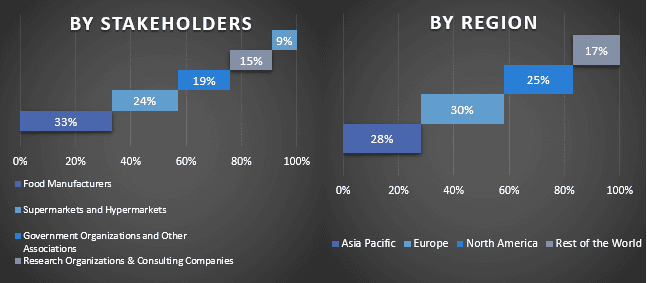
Market Engineering
The data triangulation technique was employed to complete the overall market estimation and to arrive at precise statistical numbers for each segment and sub-segment of the MENA Organic Baby Food Market. data was split into several segments & sub-segments post studying various parameters and trends in the areas of the product type and distribution channel in the MENA Organic Baby Food Market.
The main objective of the MENA Organic Baby Food Market Study
The current & future market trends of the MENA Organic Baby Food Market were pinpointed in the study. Investors can gain strategic insights to base their discretion for investments on the qualitative and quantitative analysis performed in the study. Current and future market trends determined the overall attractiveness of the market at a regional level, providing a platform for the industrial participant to exploit the untapped market to benefit from a first-mover advantage. Other quantitative goals of the studies include:
- Analyze the current and forecast market size of the MENA Organic Baby Food Market in terms of value (USD). Also, analyze the current and forecast market size of different segments and sub-segments.
- Segments in the study include areas of the product type and distribution channel.
- Define and analysis of the regulatory framework for the surgical instrument
- Analyze the value chain involved with the presence of various intermediaries, along with analyzing customer and competitor behaviors of the industry.
- Analyze the current and forecast market size of the MENA Organic Baby Food Market for the major region.
- Major countries of regions studied in the report include Asia Pacific, Europe, North America, and the Rest of the World
- Company profiles of the MENA Organic Baby Food Market and the growth strategies adopted by the market players to sustain in the fast-growing market.
- Deep dive regional level analysis of the industry
Related Reports
Customers who bought this item also bought

